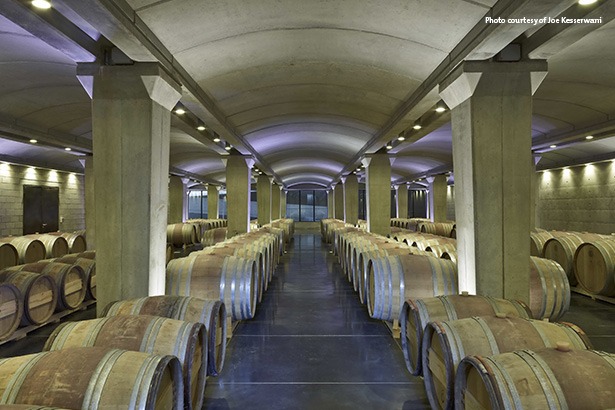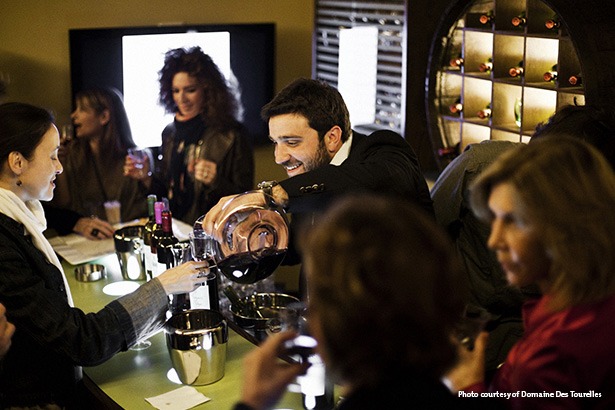The harvesting of wine grapes (vintage) is one of the most crucial steps in the process of winemaking.
The time of harvest is determined primarily by the ripeness of the grape as measured by sugar, acid and tannin levels. Winemakers base their decision to pick depending on the style of wine they wish to produce. The weather, which can damage the grapes and bring about various vine diseases, can also shape the timetable of harvesting. In addition to determining the time of the harvest, winemakers and vineyard owners must also determine whether to utilize hand pickers or mechanical harvesters.
Despite the costs, most wineries in Lebanon prefer the use of human workers to handpick grapes. The main advantage is the knowledge and discernment of the worker to pick only healthy bunches and the gentler handling of the grapes. The production of some dessert wines require that individual berries are picked from the botrytized bunches, which can only be done by hand.
The harvest season in Lebanon typically falls between August and October. Once the winemaker has defined the appropriate time for harvest, wineries invite friends and family to share the joy of picking the ripened grapes, and perhaps get a glimpse of the difficulty of winemaking.
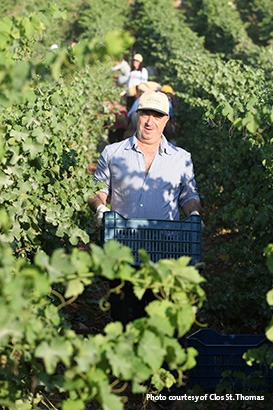
Pick Your Own Grapes
Located in the fertile Bekaa Valley, Chateau St. Thomas vineyards are spread over 500,000sqm of land. When the time is right, wine lovers and harvesters get ready for many long days of bending in the sun, picking the ripened bunches. Since harvesting the grapes should be done in the early hours of the morning, the winery begins the harvest on a weekend. Wine lovers travel from all over and camp on location in order to be fresh and dynamic in the morning. After settling in, they mingle and gather for dinner under the stars, where wine and food flow in abundance.
Early in the morning, the grapes pickers wake up, if they’d slept at all, and gather for mass, which is meant to bless the harvest for a good vintage. This takes place in the chapel on the estate. When the owners were excavating, they fell upon a small underground cave, which they expanded to create a chapel dedicated to St. Thomas, whose name the family carries. Then, they’re off to the vineyards. Experts give detailed instructions for harvesting and look over the process, which takes up to 2 to 3 hours.
If you are thinking of going grape picking, wear loose comfy clothes that will protect you from the sun and don’t forget your hat. To stay overnight at Clos St. Thomas, camping gear is necessary.
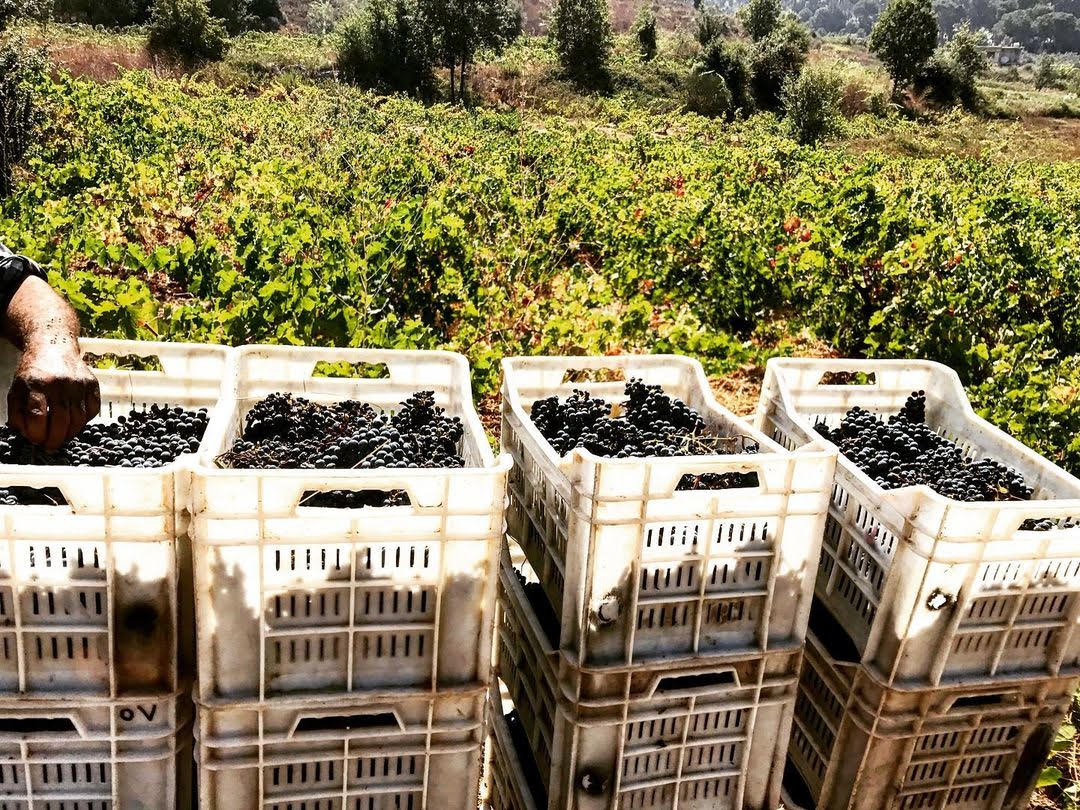
Clos de Cana in Ras el Harf, shares a similar harvesting process. During the months of September and October, weekends are reserved for amateur grape pickers who want to partake in the wine making process. Each harvester is given a pair of clippers tocut the grapes from the vine. The crops are then put in boxes. The process is not very complicated. Once the picking is over, workers take the yield to the wineries, where the amateur pickers can follow as well.
Grapes are first put in a stemmer that separates the stems from the fruits and then in a press that pours the juices into tanks for fermentation. Once the process is over, the workers of the day gather at the restaurant for a well-deserved barbeque and some good wine. For a single evening in the season, Clos de Cana goes back in time and juices the grapes the old fashion way, by having dancers stomp on the harvest. Enthusiasts can witness the process while enjoying a soiree of song, dance, food and wine.
Special Treat with the Winemaker
Chateau Ka offers wine tasting sessions with the winemaker, who will let you in on some of the secrets of their wine. Call ahead to book a session.
Time in the Vineyards
Enjoy a walk in the vineyards of Chateau Khoury and learn all about planting the vine. Educate yourself on their latest offerings during a wine tasting session.
Wine and Sustainability
A visit to IXSIR is not simply about wine. Voted as one of the greenest buildings in the world by CNN, the winery is an example to follow when it come to sustainable buildings and production. Later, you can delight in their wine…
- Tel: +961 9 22 33 50 / 1
- THE TOUR | IXSIR
Mixing Gastronomy with Wine
Le Telegraphe, the gastronomic restaurant at Château Belle Vue, features an outdoor grill and patio seating. After a hike in the winery, you can grab a bite and try out their wine range.
Lunch in the vineyards
Massaya’s garden restaurant is located in the middle of the vineyard and serves, every Friday, Saturday and Sunday, a wonderful “buffet campagnard” of country style food, prepared by housewives from the neighboring villages. Daily guided tours of the winery and distillery followed by tasting are available from 8am till 4pm; reservation is a must for the restaurant.
Wine Tasting
Chateau Musar, one of the first wines to represent Lebanon on the international market, offers visits of the winery and tasting. The visit will take about 2 hours, which can be followed by lunch at the neighboring restaurants in Jounieh and Jbeil.
- Tel: +961 9 925 056 or +961 9 925 127 or +961 9 926 217
- Chateau Musar
Chateau Qanafar describes their wine as “fruity, powerful yet complex, with oak restrained enough not to smother the subtlety of the fruit.” You can evaluate for yourself during a wine tasting at the estate, offered upon reservation.
- Tel: +961 1 398 782
- Château Qanafar – Lovingly crafting one of Lebanon’s finest wines (chateauqanafar.com)
Cave du Monastere Saint Jean in Khenchara has been producing sacramental wine since 1720, but it is only since 2006 that they have begun producing wine of international standards. For a taste of ancient knowhow, call the winery and book an appointment.
Domaine des Tourelles was the first commercial winery in Lebanon, since the others belonged to priests at the time and were not allowed to sell their products. The turrets of the estate inspired the name and it is not only known for its wine, but for a unique arak as well. As a special treat, ask for the orange liqueur and its famous chocolate shots.
- Tel: +961 8 540 114 or +961 3 805 925
- Domaine des Tourelles,chtaura,ashrafieh,Lebanon, Lebanese wine
Underground Galleries
First founded in 1857 by Jesuit Priests, one of Ksara’s distinctions is the subterranean gallery, dating back to the Roman period that was discovered by chance. Chateau Ksara stocks its oldest bottles there, as they benefit from constant temperature and humidity levels. Guided tours are available 7 days a week during the summer season. Treat yourself to cheese & wine at the winery’s restaurant.
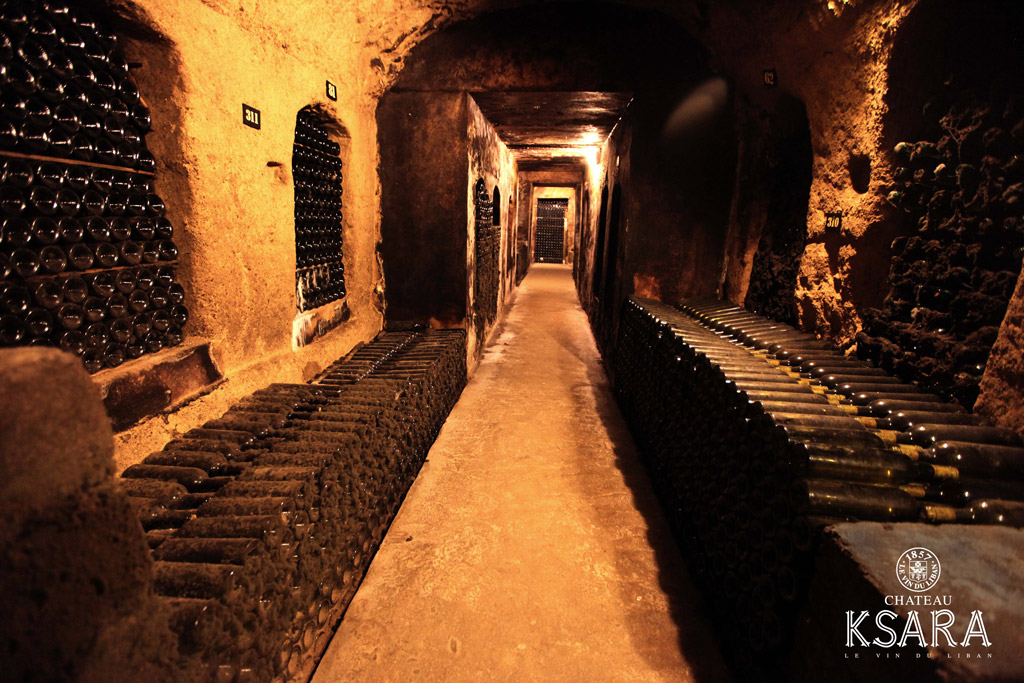
Prehistory and Wine
The entrance to a cave from the Paleolithic era was found by mistake in the vicinity of Karam Winery. After a visit to the cave that is accessible to the public, hop on to the winery for lunch and dinner upon request.
- For Reservations: +961 70 485 658 or +961 1 370 519 or +961 1 370 516
- Lebanese Wines from Jezzine | Karam Wines
“Fare Niente”
Kefraya’s beautiful vineyard spreads over 36,000,000sqm. Every inch of it, invites you in to relax. Once you are done with the tour and tasting you can enjoy a delicious lunch at the vineyard’s restaurant, and then take a nap in the garden. Just pass by. There is no need for a reservation.
- Tel: +961 8 645 333 or +961 8 645 444
- Château Kefraya: A terroir, a soul, a great wine (chateaukefraya.com)
Article edited on November 13, 2021
Loading


